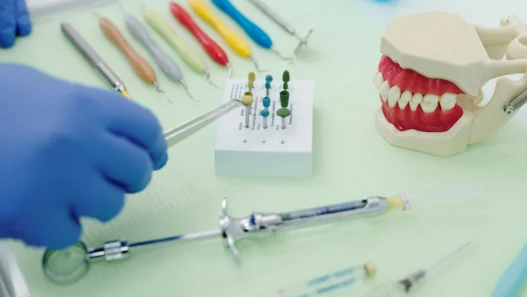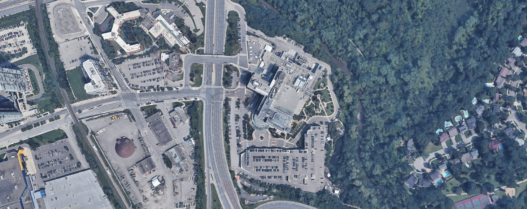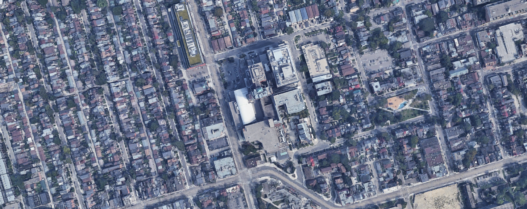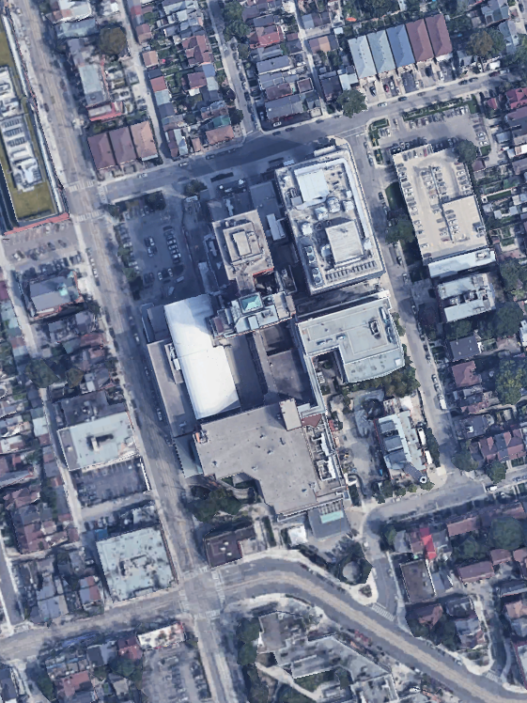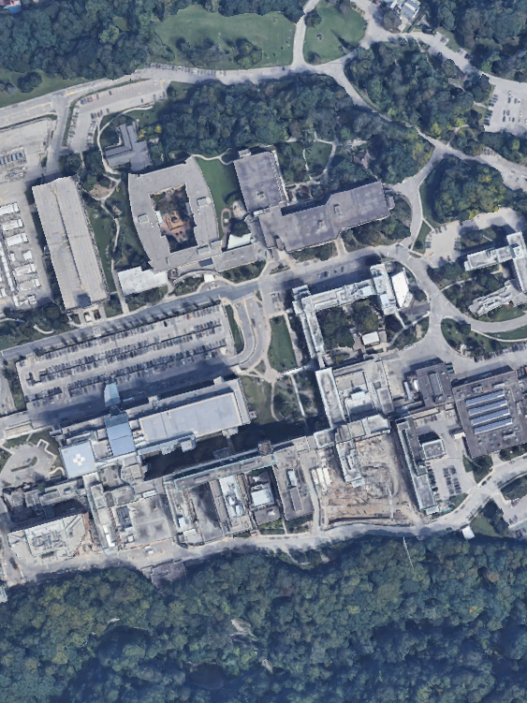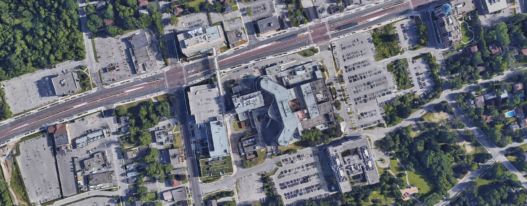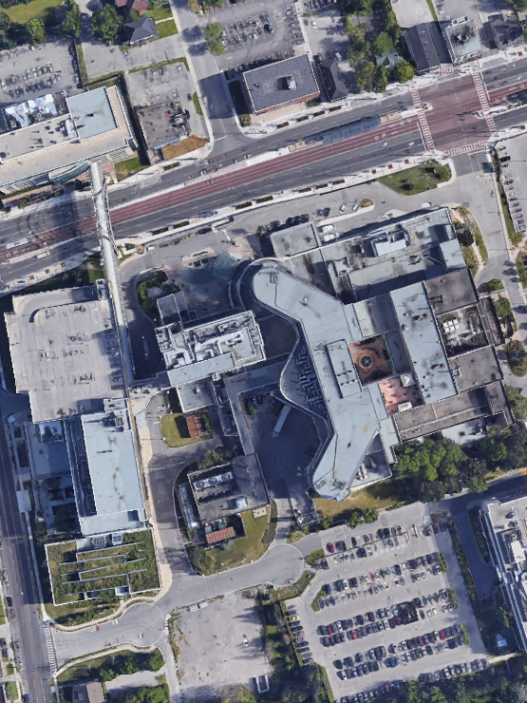On the western edge of Mississauga, where arterial highways bisect quiet neighborhoods, Credit Valley Hospital stands as both a critical access point and a system under mounting strain. As part of Trillium Health Partners—the largest community-based hospital network in Canada—Credit Valley serves one of the fastest-growing, most ethnically diverse urban regions in the country. What began as a suburban community hospital has become a regional safety valve, absorbing volume and complexity far beyond what it was built to manage.
The hospital’s emergency department operates around the clock. At any hour of the day or night, stretchers line the corridors. Triage occurs in hallways. Patients wait for hours—some for beds, others for tests, many for space. Monitors beep. Phones ring. Children cry. Staff move with practiced urgency through crowded zones. Despite modern equipment and professional expertise, the math has become increasingly difficult. Too many patients. Too few beds. Care remains available, but the conditions under which it is delivered grow more precarious each year.
From Community Outpost to Regional Anchor
When Credit Valley Hospital opened in 1985, Mississauga was still firmly suburban. Over the decades, the city’s western neighborhoods—Erin Mills, Meadowvale, Churchill Meadows—have densified dramatically. Townhomes, mid-rise condominiums, and immigrant-led commercial corridors now fill in what were once residential grids. Today, Credit Valley functions not just as a local hospital but as a key access point for an entire region.
As the western anchor of Trillium Health Partners—alongside Mississauga Hospital and Queensway Health Centre—Credit Valley handles more than 80,000 emergency visits annually. Its catchment includes parts of Brampton, Milton, and Halton Hills. When nearby hospitals divert due to capacity constraints, Credit Valley becomes the fallback. It provides pediatric care, manages trauma, stabilizes psychiatric emergencies, and absorbs overflow from across the western Greater Toronto Area.
Complex Demographics
The community served by Credit Valley is one of the most ethnically and linguistically diverse in Canada. Nearly 60 percent of local residents are immigrants. More than half speak a first language other than English. The area includes newly arrived refugee populations, multigenerational families, and residents navigating work, education, and health systems simultaneously.
These demographics bring cultural richness, but also introduce complexity in care delivery. Language barriers can delay assessment. Health beliefs may differ from clinical norms. Medical histories may be incomplete or undocumented. Fear of cost or immigration-related concerns—despite the universality of Ontario’s health coverage—may lead some patients to delay seeking care until their condition becomes urgent.
Emergency department clinicians at Credit Valley routinely manage this complexity. Translators are used. Family members assist. Clinical teams must spend more time clarifying diagnoses and explaining care plans. But in a department already stretched for time and space, each additional minute adds pressure to a system operating at the edge of its capacity.
Primary Care Gaps Drive Non-Urgent Visits
One of the most consistent drivers of emergency department volume is the shortfall in accessible primary care. In Mississauga, family doctors are retiring faster than they can be replaced. Walk-in clinics have reduced hours or shuttered entirely. While virtual care offers some support, it is not always accessible to those with limited digital literacy or language fluency.
Newcomers and long-term residents alike report difficulty securing a family physician. Many go months—or longer—without any consistent provider. For these individuals, the emergency department becomes not just the default option, but the only one.
Patients arrive with issues that do not meet strict definitions of emergency: medication refills, minor infections, back pain, blood pressure checks. Individually, these cases are manageable. In aggregate, they slow triage, stretch resources, and reduce the system’s ability to focus on higher-acuity needs.
Emergency medicine is structured around rapid response to acute illness. Without a strong foundation of primary care, the department must take on the added role of first-contact medicine—a shift that may degrade efficiency and morale over time.
Aging Patients, Higher Acuity
Mississauga’s aging population adds another layer of complexity. Nearly one in five local residents is over the age of 65. Many live alone or in seniors’ residences with varying levels of in-house medical support. Others reside with extended family in multigenerational homes that may not be equipped to manage sudden illness or deterioration.
These patients often arrive in the emergency department with infections, dehydration, heart failure, or complications from multiple chronic diseases. They may be frail, cognitively impaired, or unable to communicate their history. Most require multiple investigations—bloodwork, imaging, cardiac monitoring. Many are ultimately admitted.
But inpatient beds are limited. Long-term care placements are slow. Some patients are held in emergency for 24 hours or more, awaiting movement upstairs. They lie on stretchers in high-traffic corridors. The overhead lights remain on. Monitors beep constantly. These conditions are not designed for recovery—yet they have become routine.
Each boarded patient not only occupies a stretcher but consumes nursing hours, physician time, and hospital resources. As boarding increases, intake slows. Ambulances back up. Waiting rooms fill. And the department’s function begins to shift from acute intervention to prolonged stabilization.
Addiction and Mental Health Presentations Rising
Substance use is a growing presence in Credit Valley’s emergency department. Opioid-related emergencies, while more common in downtown Toronto, are now routine in Mississauga. Fentanyl toxicity, alcohol withdrawal, and methamphetamine-induced psychosis are all part of the clinical landscape.
Emergency staff provide immediate care—administering naloxone, sedatives, or intravenous fluids. But follow-up options remain scarce. Detox facilities are limited. Addiction counseling programs have waitlists. Community mental health clinics operate under capacity constraints. As a result, many patients are stabilized and discharged with referral sheets and discharge plans they may not be able to follow.
Mental health emergencies are equally visible. Suicidal ideation, anxiety crises, and depressive episodes lead to daily emergency visits. The department lacks private, quiet spaces for psychiatric stabilization. Most patients are managed in general care zones—where noise, crowding, and unpredictability may intensify distress.
Admission to inpatient psychiatry often requires transfer, which may not happen quickly. Beds are limited. Community supports are fragmented. Staff provide the best care they can, but many recognize they are treating symptoms of system-wide gaps, not root causes.
Bottlenecks in Diagnostics and Specialist Access
Credit Valley is well-equipped with diagnostic resources. It has CT scanners, MRI, ultrasound, and a full-service laboratory. But when volumes surge, these assets may become choke points. Imaging slots fill. Laboratory backlogs form. Consults from internal medicine, surgery, or pediatrics may be delayed.
A patient with suspected appendicitis may wait hours for confirmation. A child with a high fever and suspected pneumonia may wait behind a queue of cardiac and trauma cases. Each delay has a compounding effect. Discharges are postponed. Beds remain full. Incoming patients wait longer.
Diagnostic bottlenecks are often invisible to the public, but they significantly impact length of stay. The emergency department cannot operate independently of these downstream processes. When imaging, lab, or consult flow slows, the entire system feels the drag.
Limits of Optimization
Credit Valley has invested heavily in operational improvements. It uses real-time digital tracking to monitor patient flow. Interdisciplinary teams conduct frequent huddles. Point-of-care testing allows for faster decision-making. Mobile computers support bedside registration and clinical documentation. These tools improve efficiency. They reduce friction. But they do not solve capacity issues.
Process optimization cannot create more beds. It cannot reduce admissions when discharge options are limited. It cannot shrink the number of patients who arrive daily because no other care site is open or available.
The department’s infrastructure is being used to its limit. Efficiency has reached a ceiling. And each gain from process improvement becomes marginal in the face of unrelenting volume.
Staffing Pressures Are Mounting
Credit Valley’s emergency staff are experienced, multilingual, and highly skilled. Many have worked in high-volume urban settings. Others have deep roots in the community. But the demands placed on them may be accelerating.
Nurses often work overtime. Sick leave is up. Physicians report burnout. Support staff—clerical, portering, allied health—operate in continuous motion, rarely catching up fully. Recruitment is challenging. Retention is difficult. The pool of available replacements is shallow.
Trillium Health Partners has introduced staff wellness initiatives, mentorship programs, and professional development supports. These efforts are valuable—but they do not change the baseline workload. As more functions are absorbed into emergency care, the number of hands to manage them remains largely unchanged.
Morale remains high in pockets. But fatigue is rising. And in clinical environments, sustained pressure without relief may lead to gradual attrition.
Infrastructure: Not Broken, Just Maxed Out
Credit Valley Hospital’s emergency department is modern and well-organized. It is not outdated or neglected. But it is not built for current demand.
Treatment areas fill early each day. Overflow spaces are used routinely. Triage increasingly occurs in hallways. Pediatric, adult, and geriatric cases compete for space in a single layout. Quiet zones are hard to maintain. Noise is constant. Cleanliness is a priority, but cleaning teams operate at maximum capacity.
Physical reconfigurations have been made—adding assessment zones, fast-track areas, and sub-waiting rooms. These adjustments help. But they are short-term solutions to long-term mismatches between facility size and population demand.
True expansion would require significant capital investment—new construction, zoning, staffing increases. These take time. In the interim, the hospital continues to run at over 100 percent capacity on a regular basis.
Regional Coordination, Regional Strain
As part of the Trillium Health Partners network, Credit Valley is not isolated. It coordinates with Mississauga Hospital and Queensway Health Centre. Transfers occur regularly. Surge protocols allow for system-wide planning. When one site struggles, others pitch in where possible.
But coordination does not eliminate strain. When all hospitals in the region are over capacity, load-sharing has limited impact. It redistributes pressure rather than reducing it.
Mississauga Hospital is currently undergoing a major redevelopment—one of the largest hospital infrastructure projects in Canadian history. Once completed, it may alleviate some of the burden. But until then, Credit Valley remains one of the busiest emergency access points in the region.
Pressure of Doing Everything at Once
Emergency departments were never intended to act as primary care clinics, mental health triage zones, addiction stabilization units, and social service navigators—all at once. Yet this is what Credit Valley’s emergency department now does, daily.
Each function it performs is essential. But the combination of these roles, without equivalent support in the community, may exceed what emergency medicine was designed to sustain. Volume grows. Complexity increases. Clinical acuity mixes with social instability, language challenges, and housing insecurity. And the emergency department remains open, always.
This redefinition may reflect a larger shift in health care delivery in Canada’s urban periphery: fewer entry points, fewer alternatives, more centralized burden. Unless upstream systems regain capacity, emergency departments like Credit Valley’s may continue to carry more than their share.
The Big Picture
Credit Valley Hospital is not failing. But its emergency department may be serving as the fulcrum for a system tilting too far toward acute care as the default.
Each day, clinicians provide high-quality, compassionate care in conditions that may stretch the limits of sustainability. They work amid hallway stretchers, diagnostic delays, staffing gaps, and growing public need. They do so without complaint—but with growing concern.
Solutions exist: expanding primary care access, increasing long-term care placements, bolstering addiction and mental health services, and building infrastructure that matches population growth. But these require investment, political will, and long timelines.
Until then, Credit Valley’s emergency department may continue to do everything—because no one else can.
And in that mandate lies both the strength of the system—and its most fragile point.

